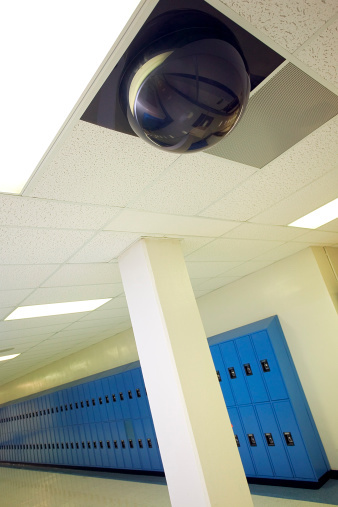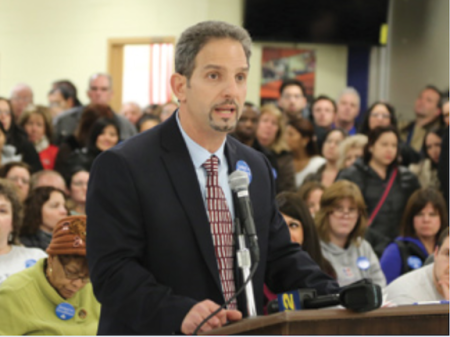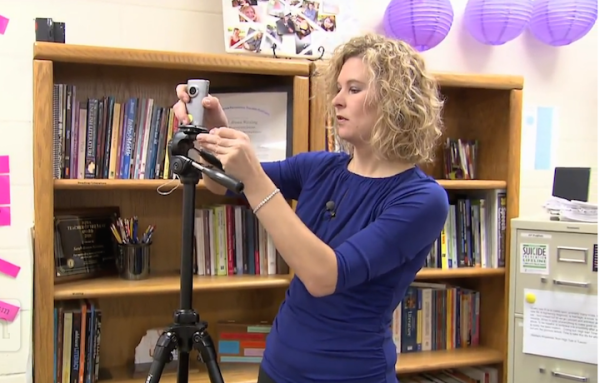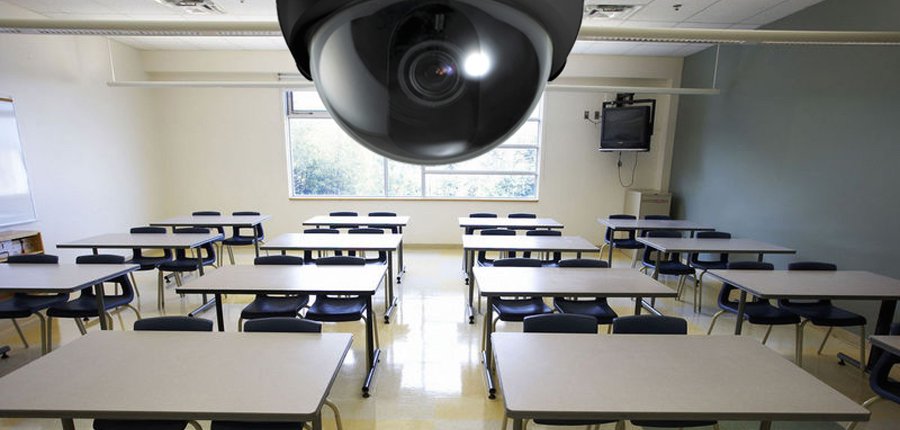In January 2014, sixteen video cameras were delivered to the Washington County School District in Tennessee, one for each school and one for the central office. The district didn't purchase the equipment as part of a school security improvement plan. Washington County, it turned out, had been selected as one of 20 districts across the state to pilot a new program to record classroom interactions and use the clips to help determine teacher effectiveness.
The mobile cameras, however, barely made it out of their boxes before the project was suspended indefinitely.
So what happened? A little transparency might have gone a long way, but it was in short supply in Washington County. District administrators approved the project without notifying school staff or parents. Curious and persistent educators were able to pry some information out of the district, but details remained scarce. Questions piled up quickly. Who paid for the cameras? What are these videos being used for specifically? Who would have control over the cameras? Where are these clips being stored and who is going to see them?
"Once we found out about the plan to put these cameras in the classrooms, we had major concerns that we brought to the attention of the district,” recalls LaDawn Hudgins, president of the Washington County Education Association (WCEA). “So did many parents. A camera was going to record their kids in the classroom and no one bothered to tell them."
Whether they are planted in a classroom, scattered throughout the school or both, video cameras provoke wildly polarized reactions. One group envisions a safe and secure school and a happy teaching staff using video to improve practice and excitedly sharing "eureka" moments with their colleagues. The other is horrified at the thought of schools being transformed into invasive, zero privacy zones, staffed by suspicious educators, intimidated by the judging and unforgiving eye of a video camera in their classroom.
Most educators probably sit somewhere in the middle. While they recognize the role video cameras play in school security, they have serious and valid concerns over privacy and the impact an excess of surveillance can have on school climate. And although teachers can benefit from the observation and reflection that a sensible use of cameras can cultivate, the situation gets dicey if clips are used to evaluate performance and cameras are there to merely snoop.
Sarah Brown Wessling, a high school English teacher in Johnston, Iowa, and the 2010 National Teacher of the Year, is a keen advocate of video's potential to help enrich a teacher's practice.
"I've always used video, but only as a tool," Wessling explains. "I use it to challenge myself and to see more clearly what is going on in my classroom and how my students are learning."
Whether video cameras are a constructive addition to a classroom depends in large part how and why they were brought into the classroom in the first place.
It was the 'how' and 'why' (and the 'who' ) that unnerved educators and parents in Washington County. LaDawn Hudgins agrees that, under the right circumstances, cameras in the classroom can be useful, especially for newer teachers, but districts must be more proactive in consulting with educators and parents.
"We wanted more information. We wanted transparency," Hudgins says. "When you hear words like 'uploaded' and 'downloaded," you want to know: Who's uploading it, who's downloading it and for what purpose?"
 Video surveillance cameras were a major part of the $2.7 billion schools spent on security systems in 2013. Photo: Getty Images
Video surveillance cameras were a major part of the $2.7 billion schools spent on security systems in 2013. Photo: Getty Images
Surveillance or Just Spying?
Video cameras are an inescapable presence in public schools across the country and the vast majority are purchased to bolster school security. The installation of interior and exterior cameras, became more commonplace after the Columbine shooting in 1999, and spiked again after Sandy Hook in 2012.
While few dispute that some measure of video surveillance are a valuable component of school safety plans, Ken Trump, president of National School Safety and Security Services, believes that the rush to install these systems - many of them extremely expensive and sophisticated - often amounts to little more than a “knee-jerk reaction.”
“Following a high-profile incident like Sandy Hook, there is always a search to do something 'new' in order to respond to the emotional security needs of parents and educators," Trump explains.
High-tech security equipment allows school administrators to point to "something tangible," says Trump, to demonstrate to parents that they take security seriously.
But he cautions that the bigger picture often hasn't been factored into these decisions.
"How much thought has been put it into whether all this equipment meshes with the school climate, culture, and community relations aspects of how schools operate?" Trump asks.
The answer is usually "not much."
For all their perceived benefits, video cameras come equipped with vast potential for abuse. Serious privacy concerns that impact students and staff, for example, have to be addressed. The National Education Association believes that education employees must be guaranteed the rights of privacy - including freedom from audio or video surveillance without the prior written permission of the individual.
One of the few places that isn't wired is the bathroom. You ever try to hold a staff meeting in a bathroom?
Consider the Belleville school board in Belleville, New Jersey. In the Fall of 2013, it embarked on a breathtakingly clumsy but audacious effort when it contracted with Clarity Systems to install $2 million worth of state-of-the-art video and audio surveillance technology to monitor virtually every corner of the district's eight schools - including classrooms, hallways, and staff rooms.
"This equipment is unbelievable. The cameras can zoom into what book you're holding or how much money you're paying the cafeteria lady," explains Mike Mignone, a math teacher at Belleville Middle School and president of the Belleville Education Association. "And the audio capabilities can pick up any conversation you have with a colleague. Staff were walking around school like zombies, afraid to say or do anything!"
District officials insisted the equipment was installed to merely improve student safety, but staff and parents didn't buy it. The cameras were just another salvo, educators insisted, from a school board and superintendent bent on intimidation, which was on full-display when they filed trumped up tenure charges against Mignone after he denounced the district's decision.
Mike Mignone speaks out against the purchase of a $2 million video and audio surveillance system at a Belleville school board meeting in April 2014. Photo: NJEA
"They did this because they don't want staff to talk to each other. They don't want us to unite, It's one thing to be seen at all times. But they can hear us as well. Talk about invasive," says Phil Lensi, a library media specialist at Belleville High School. "One of the few places that isn't wired is the bathroom. You ever try to hold a staff meeting in a bathroom?"
In addition, for a cash-strapped district like Belleville, the purchase was even more bizarre. Last April, Belleville staff and parents railed against the board's decision to invest in the equipment when other needs were being ignored.
"No one cares more about the health and well-being of our students than us," Mignone told board members, "but the money could have been spent on tools and technology that actually improve our students' education."
Choice and Trust First, Then Cameras
The climate surrounding the cameras in the classroom project in Washington County, TN - while unquestionably less toxic than the fiasco in Belleville - still prevented any flow of communication from the district to parents and school staff.
But an investigation by the School Matters blog and Washington County educators revealed, among other things, who funded the cameras (the Gates Foundation), their purpose (to produce observational clips for teacher evaluations), where the video clips would be stored (in Utah by the thereNow project), how much control teachers would have over the cameras (none), and whether parents were notified that their children would be videotaped (no).
Cameras in the classroom will not lead to the improvement of teaching, especially if they are used to evaluate teachers using a system that is basically flawed from the beginning
"The district just didn't think this through properly," says Janice Allen, an elementary school teacher and vice-president of the Washington County Education Association. "There were still a lot of unanswered questions" - including whether the video was going to be used in research to support dubious methods of teacher evaluation.
"I guess we won't find out," Allen adds. "Because we quashed the whole thing - at least for now."
The purpose of the initiative clearly was not to help teachers improve their practice, which is one of the benefits - theoretically at least - of using video as an observational tool.
Addressing the pitfalls of cameras in the classroom, Jack Hassard, a former high school teacher, current professor at Georgia State University and education blogger, wrote in 2011: "Video can be an effective tool for teachers only if they are in control of how, when, and why video technology is used in their classroom ... Cameras in the classroom will not lead to the improvement of teaching, especially if they are used to evaluate teachers using a system that is basically flawed from the beginning... Using video to evaluate teacher performance is overly behaviorist, and reduces teaching to a set of skills that some trained observer looks for when viewing a video tape."
Sarah Brown Wessling, who is also the Teacher Laureate for the Teaching Channel, urges educators not to reflexively label cameras as "surveillance," but agrees that for video to be a potentially transformative tool, three conditions must be met: choice, trust, and a clearly stated purpose.
 Sarah Brown Wessling Photo: Teaching Channel
Sarah Brown Wessling Photo: Teaching Channel
"My experiences started when I was a student teacher," she recalls. "You remember those big VCR cameras? I would use those to film me so I could see what was really going on with my teaching. So it’s been part of my practice for as long as I can remember. But it has always been my choice and it still is."
In addition, educators must also be able to trust that the person who is watching the clips is knowledgable, fair, observant, and not judgmental.
"The great thing about the camera is that it catches everything that is going on. The bad thing about the camera is that it catches everything that is going on," Wessling warns. "It's no wonder that teachers can feel very, very vulnerable in that situation."
And the sole purpose of putting cameras in the classroom should be to help teachers get better.
"Without those three preconditions, cameras can slip into an evaluative role that is about catching you doing something wrong, rather than being a tool to help us see more clearly, help us collaborate with colleagues and help end the isolation that can hold some teachers back," Wessling explains.
Unfortunately, when funding for new video equipment is dangled in front of them, many districts will happily scoop it up. Choice, trust, and purpose gets lost in the transaction and the equipment is then reserved exclusively for surveillance or evaluation, not to foster reflection and professional growth. Too often, the placement of a camera in a classroom is something that is done to educators, not by them.
"Video shouldn't be about discovering who is a 'good' or 'bad' teacher," Wessling says. "It should be about the teacher being able to look at a clip and saying: 'OK, here is what happened in this lesson, and this is how I'm going to deconstruct it, so that I can learn how to get better tomorrow.'"








